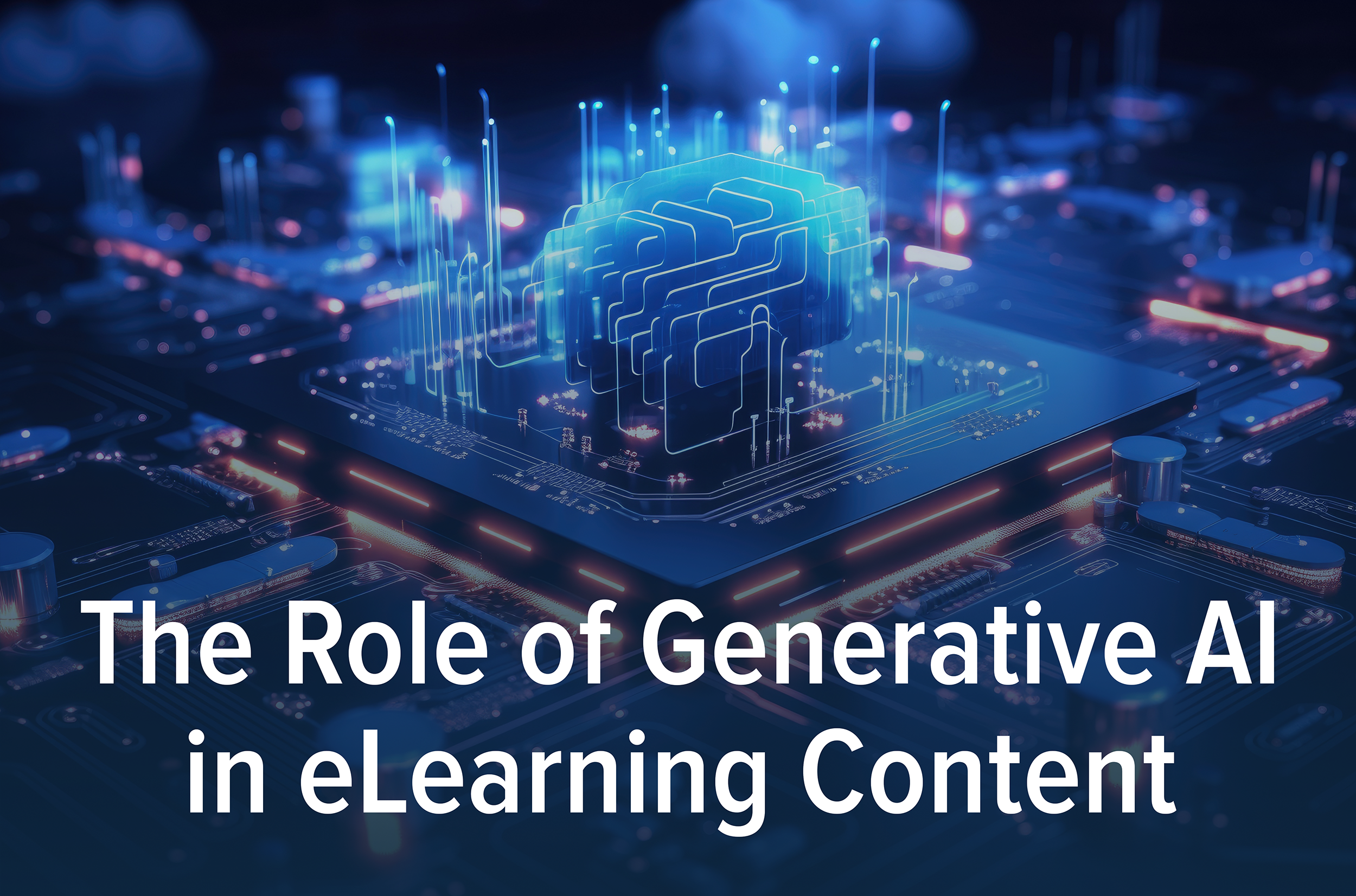As our collective human attention span continues to shrink (thanks, TikTok), it’s a wonder we get anything done. A recent study by Microsoft concluded that the human attention span has dropped to eight seconds – shrinking nearly 25% in just a few years. This phenomenon has widespread implications. How does this shortened attention span affect our ability to learn? Is it worth adapting the way we learn? Is there a way to work in tandem with shortened attention spans in an engaging way? Can we retain as much information with shortened learning? Some think microlearning may be the answer.
Whether you accept the idea that attention spans are shrinking or not, it is a fact that people prefer shorter content. According to a report by Software Advice, more the 50% of the 385 employees who took part in a survey indicated that they would use their company’s learning tools more if the courses were shorter. Rapid Learning Institute conducted a survey in which 94% of learning and development professionals stated that they opt for “bite-sized” online learning modules over traditional learning because their learners prefer it. And if subjective “preference” isn’t convincing enough, learning architect Ray Jimenez, Ph.D.’s research concluded that by creating micro-courses learning developers can reduce development costs by 50% and increase the speed of development by 300%.
But, does microlearning really work? Microlearning can look different in different practices, but it always comes in one size: small. Let’s talk about when microlearning works and how to implement it for the best results — and what common microlearning mistakes to avoid.
What is microlearning?
There is no official, formal definition of microlearning but as the term implies, all interpretations share the same characteristic: brevity. Perhaps the most common or most familiar interpretation is short-term learning delivered in micro-bursts via text, app notification, email, or other. Another way to deliver microlearning is simply through small learning units.
Microlearning can be delivered in many ways. Examples of microlearning content include text, images, videos, audio, tests and quizzes, and games. In addition to traditional eLearning platforms, microlearning is often hosted on smartphone applications, too.
Microlearning has been shown to improve retention when delivered in the right way. However, not all microlearning is created equal. Just because something is quick and easy does not necessarily mean it is retained in our minds. We can watch all the quick social media reels we want, but that doesn’t mean the content has made an impact. Implementing an effective microlearning program comes with challenges and limitations. Just because we successfully (and quickly) complete a micro-lesson doesn’t mean the information stuck.
Limitations of microlearning
Relying on microlearning to teach important concepts runs the risk of not landing crucial information. In a training context — whether you’re teaching sales strategy, code, or infection-prevention guidelines — forgotten information or misinformation can lead to poor outcomes. Here is when not to use microlearning:
Not for complex concepts or in-depth training
If you can’t scale your solution to include multi-tiered lessons and complex concepts, your employees will miss the big picture (which can be critical to your organization’s success).
Not to sacrifice substance for brevity
Short does not automatically equate to engagement. If microlearning does not employ known cognitive science principles, information likely isn’t sticking you’re your learners — no matter how short it is, or if employees like it.
Not for multi-tasking
It may seem that microlearning can be completed while also being productive elsewhere. However, multitasking leads to fragmented learning. Fragmented learning occurs when there are not clear objectives for time spent learning, or when learning time is not clearly delineated from other activities. This is not conducive to information retention.
While microlearning can be misused in these ways, learning and development professionals can avoid these common mistakes by implementing best practices.
How to incorporate microlearning the right way
Microlearning can fall short of its long-term retention promises by some delivery methods, but when applied from a cognitive-science perspective, it is an effective learning tool. If you’re considering how microlearning can fit in your training program, here are some things to look for to ensure your microlearning works.
Qualities of effective microlearning
For microlearning to work, it should adhere to brain science principles that are known to create lasting learning. Amplifire’s eLearning platform employs cognitive triggers — mental mechanisms identified through research by the world’s leading cognitive scientists — that induce fasting learning and longer retention. When it comes to microlearning, it’s not the shortness of the lesson that is engaging. It’s a whole host of factors working behind the scenes to enrich the learning experience, making learning happen faster. Here are some examples of if cognitive triggers that Amplifire’s platform uses to make shorter learning engaging, fast, and effective:
Motivation
While shortening attention spans may suggest a general lack of motivation, motivation readily exists in our minds — we just have to trigger it. On a molecular level, motivation is generally facilitated by the neurotransmitter called dopamine. While many people associate dopamine with pleasure, it is actually responsible for kickstarting pleasure by prioritizing human attention and interest. Motivation compels us to acquire the necessary information to get us from where we are to where we want to be or what we want to do. Understanding the motivational feedback loops can help us channel them into long-term learning. Stimulating curiosity, implementing rewards, creating uncertainty and risk factors, generating optimism through progress (that rewarding feeling when you complete a session), and gamification can boost motivation, thus keeping learners engaged and focused on learning.
Spacing
The spacing effect shows that “cramming” information in one massed setting is about the worst of all possible ways to learn anything for the long term. Research reveals that the optimal study gap to test interval is 10% to 20%. That breaks down in the following practical manner:
- If the time to the test is 1 week, the optimal study gap between initial study and restudy is 1 day.
- If the time to the test is 1 year, the optimal study gap is 3 weeks.
When restudy takes place too closely following the initial study session, there is little effect on memory. However, learners can achieve 300% memory gain if the proper study gap to test interval is used. Microlearning makes it easier to deliver spaced learning.
Repetition
Science has shown time and time again that repetition is an effective way to commit information to memory. Psychologist Herrmann Ebbinghaus demonstrated that a first learning attempt creates a memory trace, but that trace is vulnerable to rapid forgetting. He also discovered that memory improves through repetition and flattens the rate at which we forget things.
In the 1950s, psychologist Donald Hebb postulated that repetition is linked to the strength of the synaptic connections between neurons — memory formation. He pointed out that “neurons that fire together, wire together.” The more something is repeated, the stronger the memory pathway is forged. You can maximize repetition both within a microlearning session and by delivering the same information over multiple microlearning sessions.
Retrieval
Repeating information in an assessment format during microlearning also triggers the retrieval process — a powerful technique for better learning (known as the test effect). And assessment can be one of the most effective ways to learn. Microlearning through assessment format is a potent combination. In a study (Roediger and Karpicke) where groups of students were asked to 1) read a passage four times, 2) read the passage three times and test memory once, and 3) read a passage once and test memory three separate times, the third group that prioritized memory testing rather than merely repetition retained 62% of the original information, whereas the first group retained only 39%. This demonstrates the power of activating the brain’s natural retrieval process to commit information strongly to memory.
Microlearning best practices
In Amplifire, learners can complete smaller, shorter modules within a larger course, creating a microlearning effect without missing the “big picture.” Delivered through our eLearning platform, these modules are more effective than say, app learning, because they incorporate cognitive triggers like other methods can’t. We’re sharing some of our best practices so you can implement microlearning in a meaningful way.
Modules
As we mentioned, within Amplifire, courses can be broken into modules so learners can work in shorter segments without losing context. While microlearning sometimes isn’t suitable for complex topics, modules can help build the depth you need for your training.
Assessment format
Speaking of building, microlearning can also act as a primer for hands-on learning. In situations where online learning can’t quite replace hands-on practice (ex. Flight simulators, patient care), it can be a great way to prepare for real-world scenarios. Priming is a cognitive trigger (as identified by Amplifire’s Science Advisory Board); the process of pretesting “primes” the mind for learning and improving long-term retention, maximizing your training efforts. The Amplifire platform uses the Socratic method of questioning to incorporate the pretest primer in the learning process. This way, learners are actively engaged in learning, rather than simply watching a video or reading a passage. If microlearning can’t replace all training, it can certainly give it a much-needed boost.
Data
Another benefit of online-hosted microlearning is backend data. Amplifire’s AI collects learner data based on their interactions through the answering process. It sees when learners struggle, where they were misinformed and when they were uncertain. Microlearning might not come easily to all of your learners, so learner analytics can help you identify which learners struggle with what, so no one gets left behind. Amplifire’s in-depth reporting gives you the tools to offer highly personalized coaching when learners need it.
Refreshers
When learners present a large amount of struggle during learning the first time around, Amplifire creates a refresher course for them to briefly review those topics. Forgetting is inevitable, but when learners who struggled take the time to complete a short — dare we say “micro” — refresher, that information they worked hard to learn becomes solidified. These smart refreshers are short because it only serves up content where they didn’t have prior knowledge, saving time in the process.
Faster learning does not have to compromise the quality of our learning. As we evolve socially in the world of endless tech and seemingly shorter focus, our wiring remains the same. Learners can enjoy shorter and smaller learning sessions, but still retain the same amount of information with an eLearning platform that adheres to brain science principles. Microlearning is not merely a learning trend when implemented appropriately, powered by cognitive science. Boost learner engagement and satisfaction with the flexibility that microlearning offers. Furthermore, shorten training time, reduce costs, and maximize scalable learning opportunities for your organization.
From the beginning, Amplifire has relied on innovative brain science to guide its product development to create the most effective learning and training solution, perfectly tailored to the way the human brain works. Learn more about how Amplifire helps people learn better and faster by checking out a demo.



